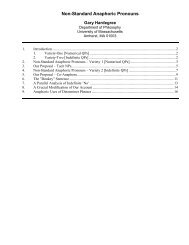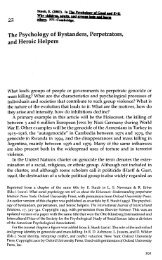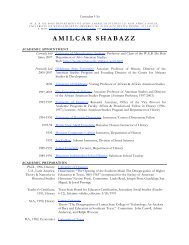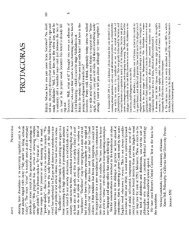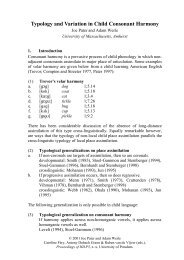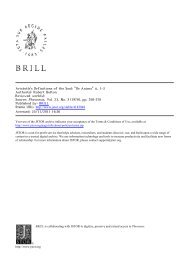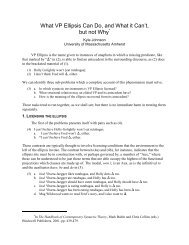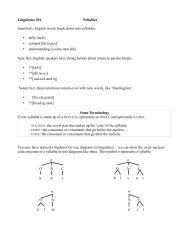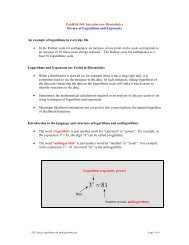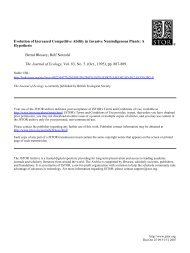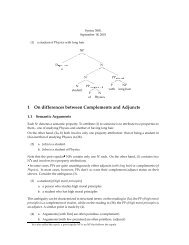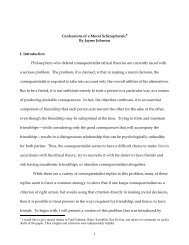rethinking translation in the second language classroom
rethinking translation in the second language classroom
rethinking translation in the second language classroom
You also want an ePaper? Increase the reach of your titles
YUMPU automatically turns print PDFs into web optimized ePapers that Google loves.
Table 3: Communicative activity #2<br />
2. INTERVIEW WITH ISABEL ALLENDE<br />
Focus: Communication<br />
Skills: - oral comprehension<br />
- written comprehension and<br />
production<br />
Duration: 50 m<strong>in</strong>utes<br />
Material: Source text <strong>in</strong> L1<br />
Parallel text <strong>in</strong> L2<br />
Translation strategies:<br />
<strong>translation</strong> <strong>in</strong>to L2<br />
use of parallel texts <strong>in</strong> L2<br />
analysis and awareness of conversational<br />
dynamics<br />
34<br />
Level: Intermediate<br />
Advanced<br />
Organization: Group work<br />
Objectives:<br />
L<strong>in</strong>guistics<br />
- To use all type of grammatical aspects.<br />
Communicative<br />
- To become familiar with <strong>the</strong> pragmatic<br />
structure of an <strong>in</strong>terview.<br />
Cultural<br />
- To become aware of differences between<br />
<strong>in</strong>terview<strong>in</strong>g <strong>in</strong> L1 and <strong>in</strong> L2.<br />
The use of parallel texts <strong>in</strong> <strong>translation</strong> is crucial for <strong>the</strong> production of an accurate text <strong>in</strong> L2. The<br />
po<strong>in</strong>t of this activity is to make students realize <strong>the</strong> importance of do<strong>in</strong>g research <strong>in</strong> <strong>the</strong> topic of<br />
<strong>translation</strong>, as well as to become familiar with <strong>the</strong> term<strong>in</strong>ology needed <strong>in</strong> L2.<br />
Structure of <strong>the</strong> activity<br />
Step 1 – Pre-analysis: Translate <strong>in</strong>terview <strong>in</strong>to L2 (for <strong>in</strong>-class activity purposes, <strong>the</strong>re should<br />
be a selection of paragraphs from <strong>the</strong> whole <strong>in</strong>terview)<br />
Step 2 – Analysis: compare your <strong>translation</strong> with parallel texts <strong>in</strong> L2. Check if your <strong>translation</strong><br />
has answers for <strong>the</strong>se questions.<br />
- What elements of discourse create cohesion and coherence? Take a closer look<br />
at pronouns, adverbs, connectors, and verb tenses.<br />
- How is <strong>the</strong> <strong>in</strong>formation structured? (old vs. new)<br />
- Can you f<strong>in</strong>d an example of an adjacency pair? Is <strong>the</strong> turn-tak<strong>in</strong>g predictable? If so,<br />
expla<strong>in</strong> why.<br />
Step 3 – Post-analysis: Reflect on differences between <strong>in</strong>terview<strong>in</strong>g <strong>in</strong> L1 and L2, and write<br />
down your conclusions. What social and/or political values are implied <strong>in</strong> this discourse?<br />
Project: Accord<strong>in</strong>g to <strong>the</strong> model of <strong>in</strong>terview you just analyzed, <strong>in</strong>terview your classmate about<br />
his/her hobbies.



